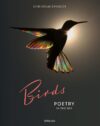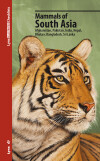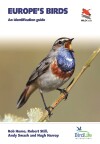As I was kicking around ideas for today’s Warbler Week post, I thought about doing one on my favorite warbler book. But I realized there was a problem with that…I didn’t know what it was. Just as I can’t single out one particular warbler as my favorite, there are too many warbler books to pick just one.
I don’t know about you, but when I think of warbler books, I think of identification guides. There are several such guides, but at least among this group I do have a clear-cut favorite – A Field Guide to Warblers of North America, in the Peterson field guide series.
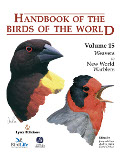 But the granddaddy of all warbler books, even though it doesn’t focus exclusively on them, just might be Handbook of the Birds of the World, Volume 15: Weavers to New World Warblers. It covers all of the world’s wood-warblers, and has some of the best photos you’ll ever see of them. If I needed to find out something about warblers, this is the first place I’d look. However, it’s not cheap. If you’d like to have a book that contains all the warblers (not just the North American representatives) without having to take out another mortgage, then there is Warblers of the Americas: An Identification Guide
But the granddaddy of all warbler books, even though it doesn’t focus exclusively on them, just might be Handbook of the Birds of the World, Volume 15: Weavers to New World Warblers. It covers all of the world’s wood-warblers, and has some of the best photos you’ll ever see of them. If I needed to find out something about warblers, this is the first place I’d look. However, it’s not cheap. If you’d like to have a book that contains all the warblers (not just the North American representatives) without having to take out another mortgage, then there is Warblers of the Americas: An Identification Guide. It’s a little old now, and from what I understand the text may not be the best. But I think the art is great.
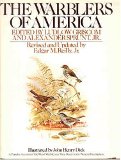 Speaking of old books, there are also the classic warbler texts by Frank Chapman and Alexander Sprunt, Jr. Chapman’s The Warblers of North America, first published in 1907, features art by the legendary Louis Agassiz Fuertes. The text, however, seems dry and straight-to-the-point. In contrast, The Warblers of America
Speaking of old books, there are also the classic warbler texts by Frank Chapman and Alexander Sprunt, Jr. Chapman’s The Warblers of North America, first published in 1907, features art by the legendary Louis Agassiz Fuertes. The text, however, seems dry and straight-to-the-point. In contrast, The Warblers of America (1957 and updated in 1979) by Sprunt is much more readable and also contains essays by other ornithologists (such as “The Resident Warblers of the West Indies”, by James Bond (whom the fictional spy was named after)). The color plates aren’t the best, but have a charm to them. Of the two, I have to say that I prefer Sprunt.
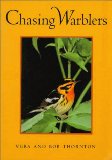 But if I had to pick, Chasing Warblers
But if I had to pick, Chasing Warblers, by Vera and Bob Thornton, just might be my favorite. In it, the authors describe their quest to photograph all of the nesting warblers of the U.S. and Canada. I read this book a long time ago, back when I had been birding for less than a year and had seen only a handful of these birds. It was thrilling to read about all these warblers that I also hoped to see some day. I’m curious to see if it holds up for me now that I’ve seen most of them. But there’s no doubt that the Thornton’s photos are still fantastic!
So what about you, what’s your favorite warbler book?
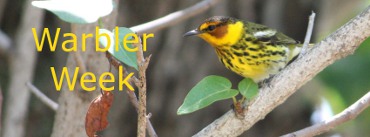 This post is a part of Warbler Week – a celebration of warblers in print and other media.
This post is a part of Warbler Week – a celebration of warblers in print and other media.

 I reviewed A Field Guide to Warblers of North America, in the Peterson guide series, a while ago. Actually, it was one of the initial reviews posted when I started this site. Well, I hesitate to call it a “review” – it was just a few short paragraphs with no images. But I’ve remedied that now.
I reviewed A Field Guide to Warblers of North America, in the Peterson guide series, a while ago. Actually, it was one of the initial reviews posted when I started this site. Well, I hesitate to call it a “review” – it was just a few short paragraphs with no images. But I’ve remedied that now.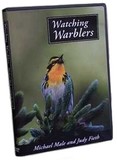
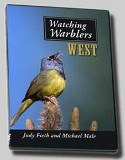
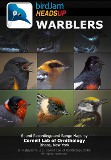 birdJam HeadsUp Warblers
birdJam HeadsUp Warblers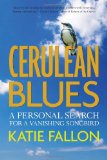
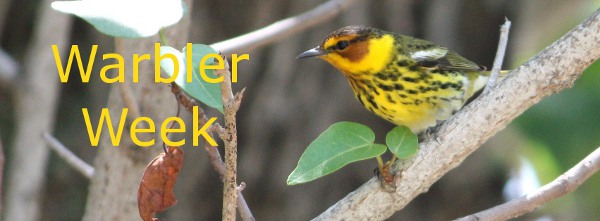
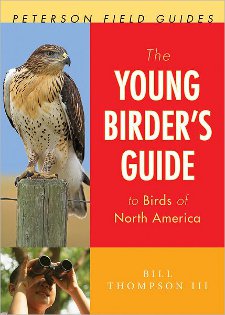 The Young Birder’s Guide to Birds of North America
The Young Birder’s Guide to Birds of North America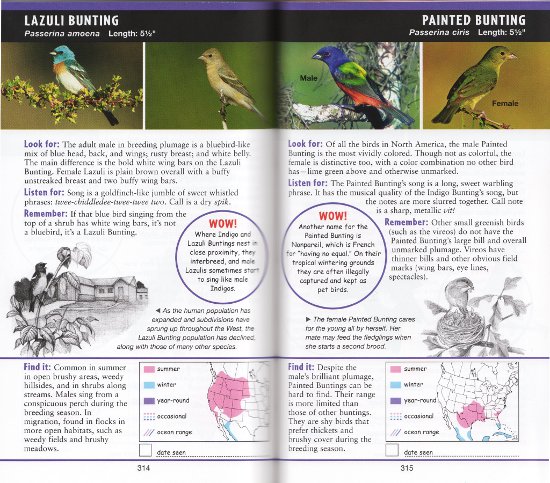
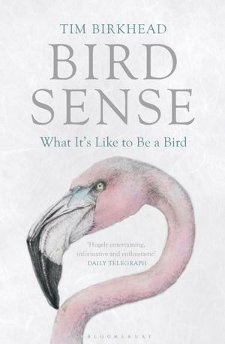 Bird Sense: What It’s Like to Be a Bird
Bird Sense: What It’s Like to Be a Bird




